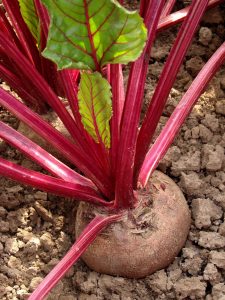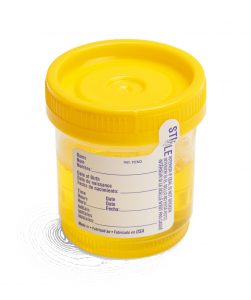Oxalic acid is made by plants and some fungi and serves their biological needs. It is corrosive and toxic. It can dissolve rust and lift mineral stains, making it an effective but hazardous industrial cleaner.
A Small Bite of Oxalate Chemistry
When oxalic acid, which is water-soluble, combines with mineral ions it yields various oxalate “salts.” These mineral salts form minute crystals. Some types of oxalates remain soluble, such as sodium oxalate, and some form insoluble solids, such as calcium oxalate. The mineral calcium has a strong affinity for oxalate and thus can draw the oxalic acid away from the sodium ion and form calcium oxalate. (Thus, a soluble form of oxalate becomes insoluble.) Calcium oxalate is the predominant form of oxalate found in soils, plants, and in the human body.
Crystals of calcium oxalate start out as particles and nano-crystals that have a tendency to grow bigger. Plants take advantage of this and create a number of fascinating crystal shapes in specialized cells. Oxalate crystals can also amalgamate into “stones.”
A Bite of Health Science
 Tiny oxalate crystals attach to healthy cells and to damaged cells or cellular debris. When the cells can’t contain, dissolve, and discard the attached crystal, it will attract other available oxalate particles and grow. This type of pathological crystal formation in the body may be fairly common in arteries, the thyroid gland, and elsewhere. This famously happens in the kidneys when oxalate crystals amass into kidney stones. Oxalate ends up in our urine because our bodies can’t alter it and must excrete it. Otherwise, it can do serious harm inside your body.
Tiny oxalate crystals attach to healthy cells and to damaged cells or cellular debris. When the cells can’t contain, dissolve, and discard the attached crystal, it will attract other available oxalate particles and grow. This type of pathological crystal formation in the body may be fairly common in arteries, the thyroid gland, and elsewhere. This famously happens in the kidneys when oxalate crystals amass into kidney stones. Oxalate ends up in our urine because our bodies can’t alter it and must excrete it. Otherwise, it can do serious harm inside your body.
Deposits in Kidneys and Beyond
In humans and animals, kidney stones typically consist of calcium oxalate. When kidney stones block the flow of urine, they become very painful and dangerous. Kidney stones are a challenging medical problem.
Oxalate deposits can form in any tissue in the body. The oxalates that accumulate in tissues outside of the kidney are a much less researched problem by far. Even less understood is the damage caused to tissues just by exposure to oxalate, either soluble or insoluble.
Plants We Love to Eat Make Oxalate.
Plants make oxalic acid from the vitamin C that they produce. Specialized cells in plants use the oxalic acid to form calcium oxalate crystals in a variety of beautiful shapes. Scientists theorize that the crystals serve plants in a number of ways:
- protecting them from excess calcium in soils,
- harming insects that try to eat them,
- storing calcium in seeds for germination,
- providing structural support,
- improving shade tolerance,
- defending against fungal infection, and others.
The foods that contain more oxalates
(and those that have less).
HIGH OXALATE

This High Oxalate Snack with peanut butter and raspberries on seeded bread has about 70 to 90mg of oxalate
Beans, grains, bran, seeds (sesame, poppy, and other seeds), peanuts, almonds and other nuts, Swiss chard, spinach, beets, potatoes, sweet potatoes, chocolate, rhubarb, figs, kiwi, blackberries, and seasonings including black pepper, cumin, and turmeric are all high in oxalates.
LOW OXALATE
Meats, dairy, eggs, other non-plant foods, and fats and oils of all types.
Many vegetables, including arugula, avocado, bok choy, cabbage, cauliflower, cilantro, cucumber, garlic, kohlrabi, lettuce, mustard greens, mushrooms, onions, red bell pepper, green peas, winter squash, turnips, and watercress, are low in oxalates.
It’s a myth that green vegetables are all high in oxalates!
Oxalate Can Come From You
Your body makes some oxalate as a metabolic waste product. Metabolic oxalate is usually made at a rate, pace, and quantity that your body is equipped to excrete. Many assaults and other factors, including genetics, may cause an over-production of metabolic oxalate in some people. This situation would lead to systemic problems, but has not been adequately studied. The biochemistry of oxalate is a neglected “Cinderella” topic in science.
Nutrients impact oxalate in the body
The amount produced by your metabolism can go up if you’re deficient in vitamin B6 or if you take high doses of vitamin C. Thus, excessive C or a B6 deficiency may contribute to problems with oxalate in some people.
Genetic Factors
A few people may be more susceptible to higher levels of internal production of oxalate due to several genetic variations, which are poorly understood. Scientists have mostly studied these genetic problems in people who form kidney stones at a young age. When fully expressed, these genetic differences can cause a very rare, but deadly, form of oxalate poisoning called primary hyperoxaluria. Medical reports on the effects of excessive oxalate in the body talk about how difficult it is to diagnose primary hyperoxaluria, which is the most extreme form of oxalate excess.
What oxalates do
Oxalates steal minerals—iron, calcium, magnesium, zinc—that your body needs. Resulting mineral deficiencies cause growth, reproductive, bone, and other problems.
Digestion
Oxalates corrode digestive system linings, causing leaky gut or other gastrointestinal diseases. Needle-shaped oxalate crystals are known to perforate mucus membrane cells.
Kidneys and Elsewhere
Your body has no way to metabolize or otherwise disarm oxalate crystals; it can only try to excrete them. But as they move into and through the bloodstream, they can migrate into other tissues, especially if they overwhelm the kidneys’ ability to filter them out. As a result, oxalate micro- and nano-crystals may collect in any body tissue—in joints, in stomach linings, in the kidneys themselves (where they become a major component of kidney stones), even in the plaque inside your arteries. Crystal accumulation can also cause more generalized problems, such as overall malaise, poor concentration, joint stiffness, swelling, muscle pain, gastritis, tendonitis, or other inflammatory conditions. There are a number of studies demonstrating that oxalate exposure can cause damage even when micro-crystals don’t develop or persist.
Tissue Damage and Immune System Stress
Soluble oxalates have many bad effects on body tissues: damaging membranes and mitochondria, creating fatigue and energy issues that cause cell death, triggering nerve cell damage that causes functional problems throughout the nervous system, depleting the antioxidant glutathione (that helps the liver detoxify chemicals and that preserves brain health), and creating autoimmune symptoms by stressing and confusing the immune system.
How do you know if you have oxalate poisoning? Is there a test?
Practically speaking, the safest, most affordable and most reliable test is correctly trying the low-oxalate diet with a good understanding of how your body can react to it. You need adequate knowledge to interpret and “read” the test. I mistakenly discounted the value of this test for myself in 2009, when I first gave it a deliberate but inadequate trial. So study the resources on my site to learn what to look for and what to expect, and consider getting a consultation.
Why medical testing doesn’t diagnose this
Medical science knows no sure way to detect oxalate poisoning. Doctors rarely test for oxalate problems. One reason is that the available tests can be extremely invasive, inconclusive, or both. When doctors do test for oxalate problems, the tests are often performed or interpreted incorrectly. We need a better understanding of the biochemistry so we can develop better tests.
Biopsy
Testing for oxalates may use bone, skin, or kidney samples obtained through biopsy. Bone samples are considered the most reliable source, because of oxalic acid’s high affinity for calcium and because oxalate levels normally fluctuate less in bones than in other tissues. Kidney biopsies are reserved for cases with strong clinical evidence of advanced kidney failure. Invasive bone or skin biopsies are used rarely, typically in critical cases when excessive internal production of oxalate is suspected.
Blood and Urine Tests
Long-standing technical difficulties have made measuring oxalate in blood and urine unreliable, causing doctors to look elsewhere to explain disease (and even to ignore the problem of oxalates entirely). Since the 1990s, modern technical advances have made it possible to accurately measure oxalate in urine, but the ability to detect oxalates still hasn’t changed the medical habit of ignoring oxalate in the body, even for patients with oxalate kidney stones.
Accurate tests require training, skill, and use of proper protocols, not just during the testing of samples, but in collecting and handling them. On the rare occasions when urinary oxalate is measured, it’s assayed (analyzed) badly—most often due to inadequate handling and workup of the urine sample prior to actual measurement.
Very few medical offices are equipped with the knowledge, training, and skill to successfully conduct this specialized testing.
Lack of Understanding
Even if test results were more accurate, poor understanding of the many factors that affect how and when the body handles oxalate in various tissues means the tests are often misinterpreted. This lack of understanding of when the body moves oxalate out adds to the urine tests’ unreliability. Oxalate levels in urine fluctuate throughout the day and from one day to the next. A series of single-void tests over a series of days would offer more informative results than testing a single void or a combined 24-hour urine sample.
Also, when kidney function is compromised, results are likely to be “normal” or even low, because the kidneys aren’t healthy enough to remove oxalate well. The resulting buildup of oxalate in the body can not only be dangerous, but can also lead to a misdiagnosis.
Lack of Awareness
Most health care providers don’t administer these tests, because they aren’t aware that oxalate poisoning may be a cause of a patient’s health problems.
Until 1992, when The VP Foundation started helping women with genital pain, none of us would have any clue that we had oxalate poisoning. And we must still rely on the initiatives of such pioneers, working outside conventional health care, for help with it.
What are the risk factors for oxalate poisoning?
There are two categories of risk factors, affecting what gets in and what gets out.
WHAT GETS IN
The foods you eat, the function of your gut, and possibly other unknown factors determine what gets into your body.
WHAT GETS OUT
Factors that increase absorption of oxalates and other factors that limit your ability to excrete them determine what gets out.
The kidneys are the main exit for oxalates. But many factors can impair kidney function. Taking over-the-counter pain and cold medications, and some popular prescription drugs, may make you more susceptible, because they depress gut flora and function and reduce the kidneys’ ability to filter oxalates out. Indoor air pollution can also harm kidney function. When kidney function is poor, regardless of the reason, high-oxalate foods are dangerous to consume.
Other Vulnerabilities
Being old (and having more years of oxalate consumption behind you), being overweight, having some types of gastrointestinal resection surgery, metabolic syndrome, and having vitamin or mineral deficiencies may make you more susceptible to oxalate poisoning or vulnerable to its symptoms.
Contrary to popular belief, a healthy diet that includes a lot of fresh meat does not harm the kidneys as long as use of drugs and other kidney-harming toxins is low, and fresh low-oxalate vegetables are a part of the daily diet.
There are probably many other factors that medical science has yet to discover and document.
What can you do about it?
Fortunately, there’s a lot you can do, because oxalate poisoning results not from infection or allergy, but from toxicity. And the way to deal with toxicity is very straightforward: Stop ingesting the toxins—specifically, foods and spices that are high in oxalates.
Changing your diet to replace the high-oxalate foods you eat with low-oxalate foods can relieve oxalate poisoning’s pain and prevent its recurrence. It’s relatively simple to do, but hard to succeed without the right help and resources.
So start by reading more about low-oxalate diets and attending one of my online groups.
Don’t miss my Oxalate Basics FAQ Fact Sheet.
If you would like a thoroughly researched introduction to oxalate accumulation and why it is a growing problem, you can read my recent article: Sally K. Norton (2017) , “Lost Seasonality and Overconsumption of Plants: Risking Oxalate Toxicity” Journal of Evolution and Health (Volume 2, Issue 3), available here.
Plus you can find an additional technical introduction in this scientific journal article: Update on Oxalate Crystal Disease, by E. Lorenz, et.al. (2013) https://www.ncbi.nlm.nih.gov/pmc/articles/PMC3710657/






